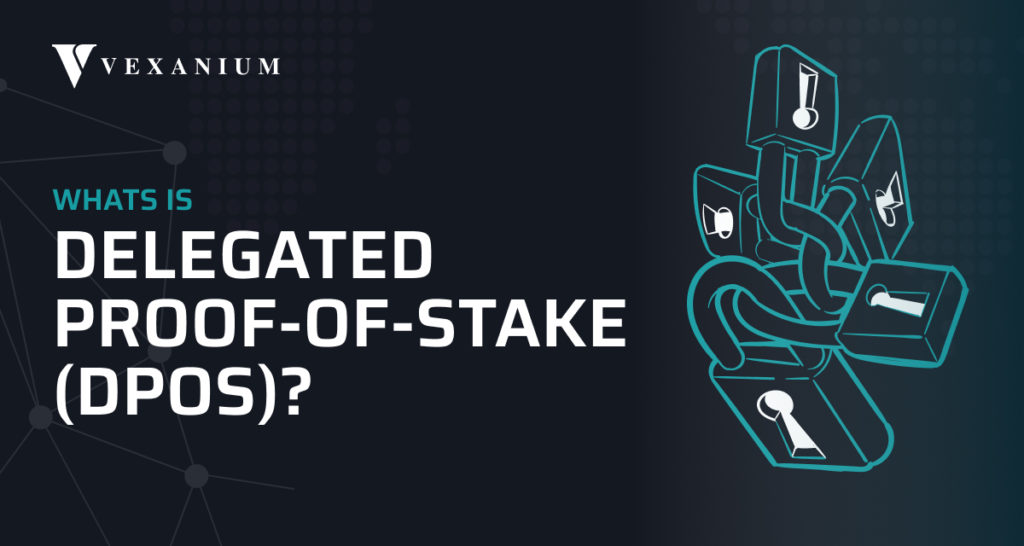
The consensus mechanism is one of the essential elements in a blockchain network. The goal of the consensus mechanism is to ensure the security and integrity of the decentralized blockchain. Every transaction must be verified by consensus before it can be added to the network.
Among other types of consensus, Delegated Proof-of-Stake (DPoS) consensus is considered the most effective in helping to ensure blockchain protocols remain sustainable and scalable. Daniel Larimer developed the DPoS consensus mechanism itself in 2014. Vexanium has been using DPoS consensus since the launch of the mainnet in 2019, joining the ranks of other public blockchain infrastructures such as Bitshares, Steem, Ark, and Lisk which also use the DPoS consensus algorithm.
Get to Know DPoS Consensus
Delegated Proof-of-Stake (DPoS) works similarly to Proof-of-Stake (PoS) because DPoS is a development of PoS. The difference is that DPoS allows blockchain network users to vote and select multiple delegates to become validators.
To participate in the DPoS consensus mechanism, blockchain network users must stake coins to select delegates. The delegates are known as witnesses or block producers. The selected delegates will validate and receive a reward in the form of crypto coins, which will then be distributed to their supporters in a staking pool. The more tokens held, the more likely it is to become a validator and get more tokens from delegating. In addition, this consensus also tends to be faster in terms of transactions per second (TPS) compared to PoS.
How does the DPoS Consensus work?
Below is how Delegated Proof-of-Stake (DPoS) works, divided by roles.
1. Witnesses
The number of witnesses is limited to a certain number, usually ranging from 21 to 101. All witnesses are responsible for validating transactions and creating blocks. Witnesses can prevent certain transactions from being included in the block, but they cannot change any transaction information. As a reward, the witnesses will get several coins. Unlike miners on blockchain who use Proof-of-Work (PoW). Each top-tier witness risks being replaced by another user who gets more votes in the vote.
2. Delegation
DPoS consensus users will select a group of delegates overseeing blockchain governance. Delegates have no role in controlling transactions, but delegates can propose changes to the block size or the amount that the witness must pay in exchange for being able to validate the block. Once the delegate proposes the change, blockchain users can choose whether to adopt it or not.
3. Block Validator
Block validator in DPoS consensus refers to the full node that verifies that the block created by the witness complies with the consensus rules. So, every user can run block validator and network verification.
Advantages of DPoS
- Consensus The DPoS consensus adheres to a democratic system through voting, where blockchain users can choose block producers.
- Regarding transactions per second (TPS), DPoS consensus tends to be faster than PoS.
- Consensus DPoS has a much faster and more scalable verification system because few people manage blocks. In contrast to PoS, block validators are randomly selected according to the number of crypto assets owned by the user.
- DPoS Consensus can propose changes to the blockchain with user consent.
From the explanation above, it can be concluded that the Delegated Proof-of-Stake (DPoS) consensus is a development of a more democratic PoS consensus. It is because data verification is chosen based on the voting results by users of the blockchain network, where the data verification process involves more users from various circles, not only those with large capital. In addition, DPoS also tends to be faster in terms of transactions per second (TPS) compared to PoS. It is evident from Vexanium, which has a transaction speed of over 2000 TPS.